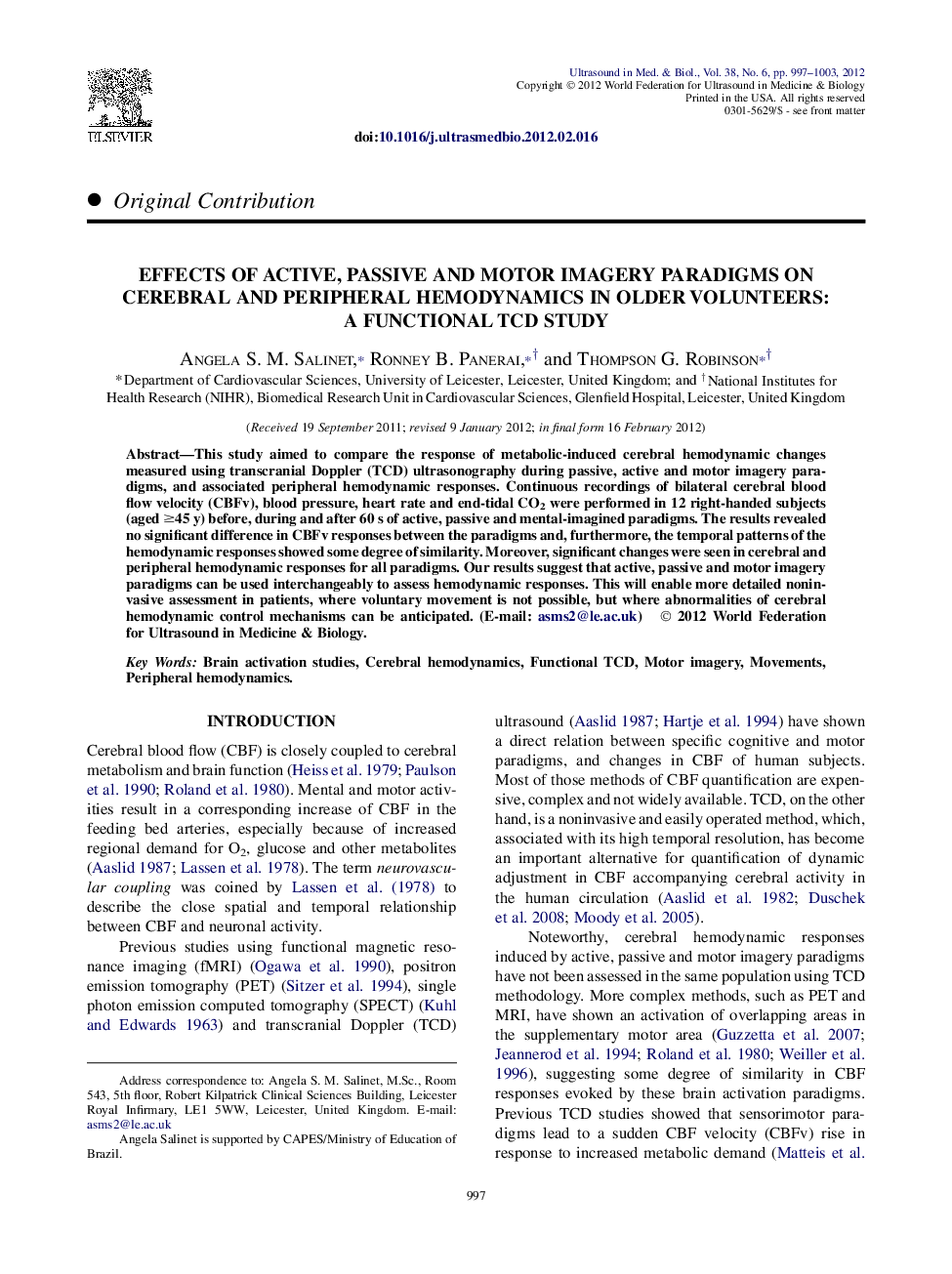| Article ID | Journal | Published Year | Pages | File Type |
|---|---|---|---|---|
| 1760575 | Ultrasound in Medicine & Biology | 2012 | 7 Pages |
Abstract
This study aimed to compare the response of metabolic-induced cerebral hemodynamic changes measured using transcranial Doppler (TCD) ultrasonography during passive, active and motor imagery paradigms, and associated peripheral hemodynamic responses. Continuous recordings of bilateral cerebral blood flow velocity (CBFv), blood pressure, heart rate and end-tidal CO2 were performed in 12 right-handed subjects (aged â¥45 y) before, during and after 60 s of active, passive and mental-imagined paradigms. The results revealed no significant difference in CBFv responses between the paradigms and, furthermore, the temporal patterns of the hemodynamic responses showed some degree of similarity. Moreover, significant changes were seen in cerebral and peripheral hemodynamic responses for all paradigms. Our results suggest that active, passive and motor imagery paradigms can be used interchangeably to assess hemodynamic responses. This will enable more detailed noninvasive assessment in patients, where voluntary movement is not possible, but where abnormalities of cerebral hemodynamic control mechanisms can be anticipated.
Related Topics
Physical Sciences and Engineering
Physics and Astronomy
Acoustics and Ultrasonics
Authors
Angela S.M. Salinet, Ronney B. Panerai, Thompson G. Robinson,
